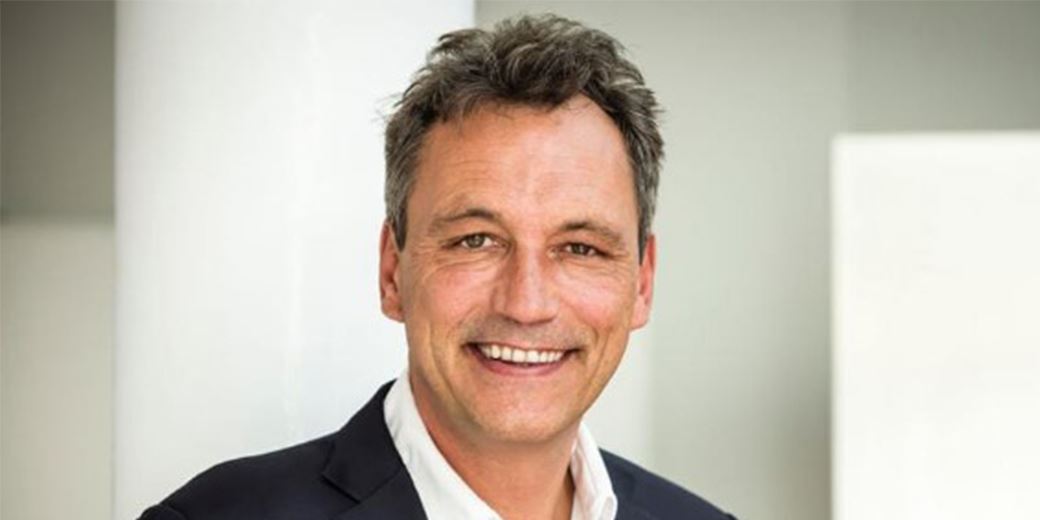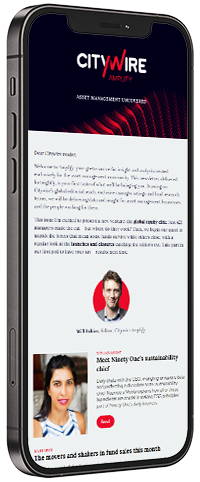There might be light at the end of the tunnel, but it ain’t here yet.
Size matters: How Moonfare conquered 23 countries

Latest Newsletter
Value stance rewards managers with first AAA rating
The year comes to a close with a host of managers gaining their AAA wings.
Real Life: A cheaper, smarter way to fly business to the US
Companies are clamping down on travel costs. Here’s how to travel in comfort while keeping the expenses department happy.
Community
From an initial idea in Germany to 23 countries in six years, Moonfare has supercharged its growth. So far, the private equity platform has had an early-mover advantage. But now, chief executive Steffen Pauls needs to stay ahead of an increasing number of competitors who are seeing the potential in digitising alternative fund distribution.
There have been more than 100 new entrants in the alternatives platform market since Moonfare launched, said Pauls (pictured). Indeed, Amplify is chronicling each new kid on the block. But few have the same scale.
‘When we started the company, I became a bit insecure because there was no one else,’ he recalled.
But since 2019, the market has been expanding, with the so-called ‘democratisation’ of private markets becoming the buzzword of 2022.
‘The entire topic, what the industry calls democratisation… when I was still with KKR in 2015-16, it was in its infancy,’ Pauls said. ‘When Moonfare started, a few others followed. The largest firms, like Blackstone, Carlyle and Apollo, they absolutely got it and this will be a strategic thing for them. And now I don’t know a single fund that is not talking about opening up for what they call retail clients.’
Size matters
But what does Moonfare have that others don’t?
First off, it has assets. From less than a billion a year ago, the firm has grown to manage $2.3bn. It has also doubled its workforce, to 200.
Its management has been focusing on international growth over the past year, opening offices in France and the US. Moonfare has been active for less than six months in the States and has already gathered $150m in assets from clients there.
The platform also features some of the best-known names in private equity such as KKR, Silverlake, Permira and EQT. Individuals can invest in funds or a portfolio of funds, from a minimum of £50,000.
Its size gets it access to better managers, Pauls said. Through pooling, Moonfare can put at least $250m in a fund.
‘It makes a difference if you have size to get into the best products. But equally importantly, we have some of the smartest private equity investors on our platform. These are people that have been in the industry for 30 years, they might work in one firm but would like to invest in other funds.
‘And we share the community data. We can say here are the most experienced investors in private equity and we share in which funds and strategies they invest. So that normal people who are less familiar, not from the industry, can rely on other independent people – like a peer group benchmark.’
The platform does not charge the funds for fundraising, just the investors. Traditionally, placement agents, who raise capital from investors for funds, charge a fee to the private equity firm. Through Moonfare, firms can raise capital from individuals without having to pay for access.
Regulatory challenges
The biggest challenge for a financial services company growing internationally dealing with different sets of regulations. And it was no different for Moonfare.
‘We have to adapt our platform to every country because, in every country, the jurisdiction of the legislation is different,’ Pauls said.
But anticipating this, the building blocks of Moonfare have been modular since the beginning, making it easy to adapt to local needs.
‘We knew that we would need this in the future. In the meantime, we have a very large legal and compliance team that is running like a machine in lining up one country after the other,’ Pauls said.
Moonfare has 15 to 20 people in its compliance team and uses external lawyers to get local expertise. Half of the employees work in product and technology.
Pauls said the US was by far the trickiest market as it has very different regulations and the firm needs to have a separate license. It is also the most competitive and the largest market the firm is active in.
Client acquisition
Moonfare has relied largely on word-of-mouth marketing to acquire its customers – with a little help. Aiming for the heart of the financial ecosystem, the firm approaches people from banks and other professional services firms. It holds dinners around the world – more than 50 in 2022 – where people can come together and hear from fund managers and meet other investors.
In 2021 Fidelity International took a stake in Moonfare that gave the fund group’s institutional and wholesale clients access to private market strategies. It marked Fidelity International’s first move into this part of the alternatives market. Check out the Wealth Show podcast episode (above) to learn more about the deal.
Pauls said its marketing team and budget were limited. Although the firm has accounts on Instagram, Facebook and YouTube, it mostly uses LinkedIn, which is by far the best-performing, he said.
But it will be hoping to get some traction from a launch, last week, of ‘dedicated family office investment platform’. According to a statement, Moonfare Private Investment Office offers ‘a forward-looking fund pipeline, proprietary due diligence reports on target funds ahead of their launch as well as access to webinars and fund reporting.
Citywire Amplify will cover private market platforms every fortnight. Read the previous entry in the series, on Prometheus, here. See below for a comparison between the platforms we have covered so far.
Latest Newsletter
Amplify Issue 30: The fund groups topping the tree
We analyse which groups have had the biggest inflows and outflows in 2022, look at managers achieving their first AAA ratings, and hear from Rob Kyprianou on why regulation gets it back to front.
Amplify Issue 29: Red hot: 2022’s private market hiring spree
2022 has been a hot year for private markets, but are asset managers putting the brakes on their expansion efforts? Plus, we look at how the bear market has affected launches this year and look at how firms can better communicate their brand values.
Amplify Issue 28: Fill your ESG product gaps
We hear from fund buyers on what they’re looking for from an ESG fund, find out what Neuberger Berman is plotting in the alts world, and learn the winners of Citywire’s Gender Diversity Awards.
Community
